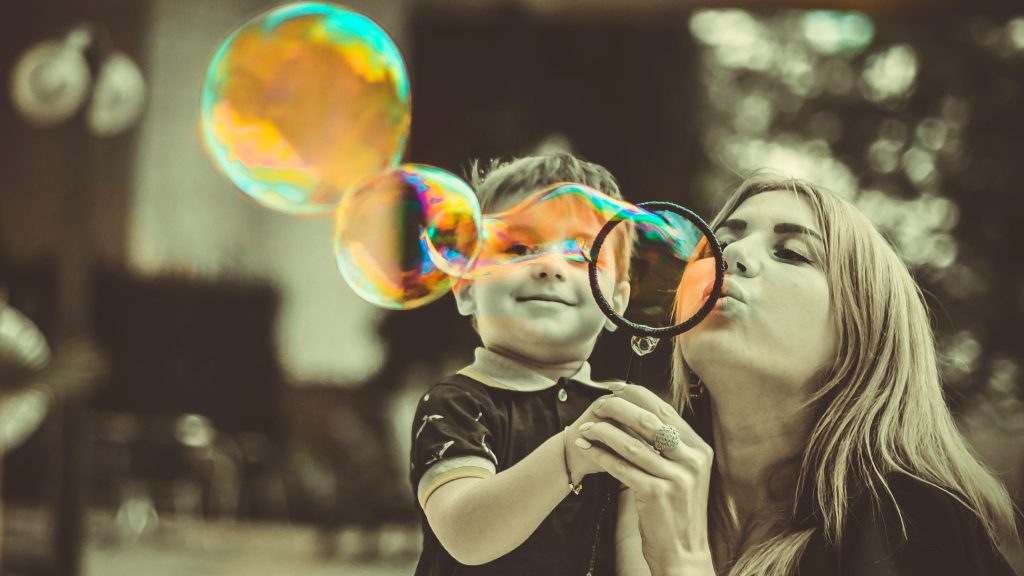Every year, the month of September always equals the year’s Recovery Month, observed nationally across the U.S. to recognize, honor and celebrate every single personal successful recovery from substance addiction and mental health issues across the U.S. and beyond.
“Recovery is for everyone. Every person. Every family. Every community.”
– The new theme for Recovery Month to be used for every year’s celebration from now onwards
The successful recovery – long-term and sustainable – from a drug or alcohol substance use disorder (SUD) or from a mental health disorder (MHD) or a serious behavioral issue should always be a cause for celebration.
For the individual concerned, it is one of the most important, life-changing triumphs of their entire lives, whatever their age.
What is Recovery Month?
Recovery Month (previously known as National Recovery Month) is a two-fold opportunity for all those involved in helping people across the U.S. find real recovery for those with a SUD or MHD to:
- Promote public awareness and provide information on all aspects of substance use and mental health treatment and recovery, and to
- Provide an opportunity for all those who have found recovery to be acknowledged and celebrated for their massive personal achievement
2022’s theme continues on from last year: “Recovery is for everyone. Every person. Every family. Every community” – and it will be the permanent theme for at least the foreseeable future.
However, having been previously organized by the Substance Abuse and Mental Health Services Administration (SAMSHA) since it was launched in 1989, in June, 2020, SAMHSA announced its decision to step back from organizing the annual National Recovery Month, and the event was taken over by Faces & Voices of Recovery under the new name of “Recovery Month.”
Not only did SAMSHA originally want to increase public awareness surrounding mental health and addiction recovery, they also wanted to give those in recovery a time to celebrate their successful recovery, and those principles will continue to be followed.
Furthermore, Recovery Month importantly highlights to all those currently using substances or are suffering from mental health issues to seek a recovery of their own. Recovery really is not only possible, it is achievable – whatever your circumstances and your personal story.
Faces & Voices of Recovery has created a new Recovery Month website to host all Recovery Month events, to provide people with shareable graphics to download to share on social media, and much, much more.
The Power of Recovery
Every year in the U.S., thousands upon thousands of Americans transform their lives through recovery – whether it is the successful recovery from a drug or alcohol addiction, the successful recovery from a mental health disorder (MHD), or the successful recovery from a severe behavioral issue.
In addition, there are those who have recovered from a co-occurring disorder (also known as dual diagnosis) which is the simultaneous presence of a SUD with a MHD. The only realistic prospect of achieving a successful recovery from this condition is where the individual receives the professional treatment of both disorders at the same time.
Because such recoveries are an incredibly personal achievement, Recovery Month (formerly known as National Recovery Month) provides a way for people to celebrate these wonderful accomplishments.
|
If you are struggling with substances or your mental health, Modern Recovery is your source for comprehensive support for both addiction and mental health recovery. Our mission is to provide consistent structure and accountability to empower participants in achieving success. |
Recovery Month, 2022 with Faces & Voices of Recovery
To participate in Recovery Month 2022, you can either be in recovery yourself, supporting a family member or friend who is in recovery, or you can participate simply to promote and share awareness of Recovery Month.
|
Events: |

|
||
|
Social Media: |
 |
||
|
Proclamation: |
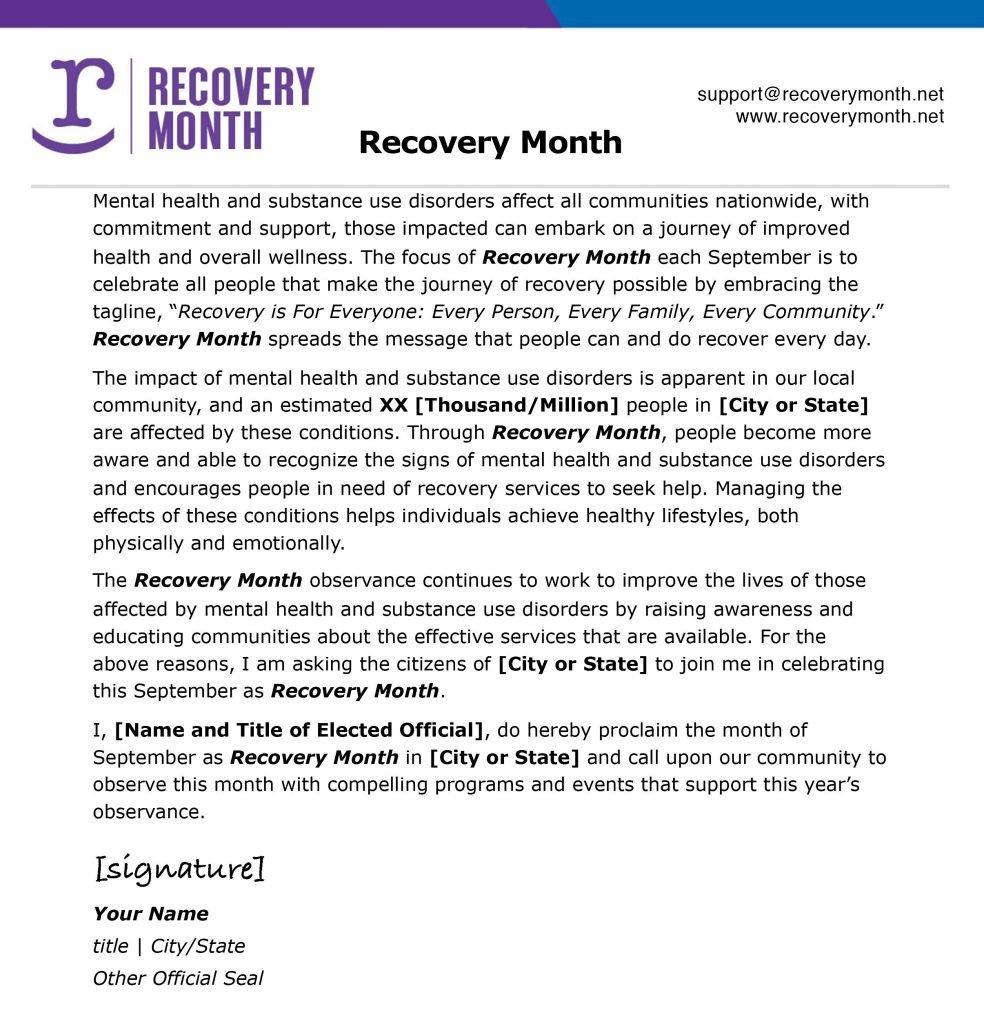 |
||
|
Apparel: |

|
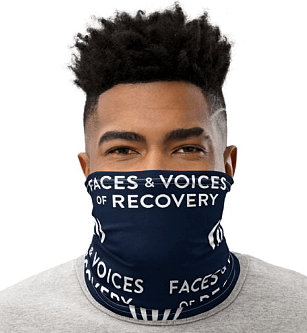
|

|
|
Shareable Graphics: |

|
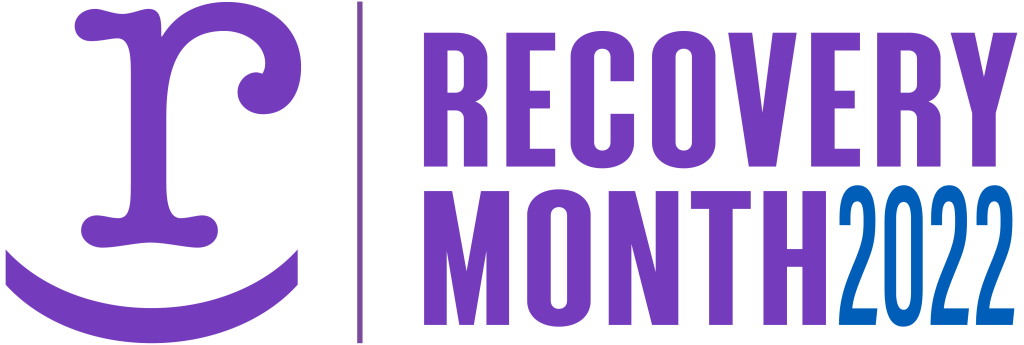
|
|
Recovery Month Events
One of the main features of every year’s Recovery Month are the “Events” – a calendar packed with activities, rallies, exhibitions, symposia, and virtual get-togethers all over the U.S., either in-person or online.
As we mentioned earlier, Faces & Voices of Recovery is organizing this year’s events calendar. To view the calendar, click here. Here are just a few of the examples of the main events on offer:
Movement = Medicine
|
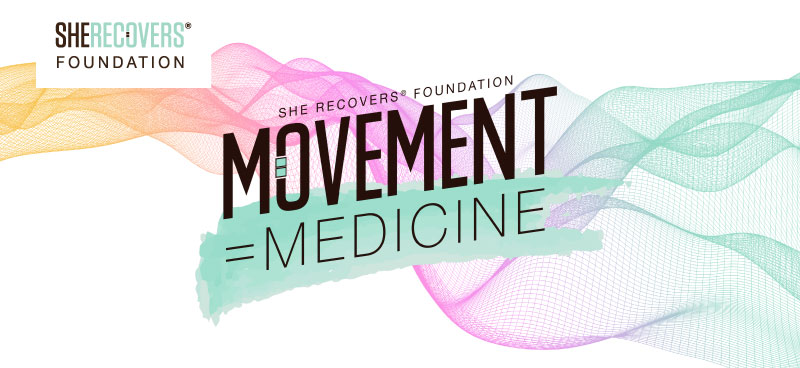 |
|
From September 1 – October 8, we are going to be engaging our bodies, minds and spirits through 108 repetitions or 108 minutes of intentional movement during recovery month for our annual Movement=Medicine campaign. Choose a date between September 1st and October 8th. Recruit a team and meet up at a certain time in person to complete your activity. Or if you prefer to move solo, great! Encourage friends and family to register and take the 108 Challenge with you! Make sure you take a photo or a video of you getting your movement in and share on social media using the hashtag #MovementEqualsMedicine so we can cheer you on! Join us and learn more @ movementequalsmedicine.org |
|
Recovery Happens 2022 Art ShowThe Recovery Month 2022 Art Show is a display of art inspired by the themes of recovery and hope. The event is being held both online and virtually. To see the artwork in-person, the Art Show is being held at the Caldwell Center, 400 County Center, Redwood City, CA 94063. To see the artwork virtually, visit Voices of Recovery, San Mateo County. The Art Show is open in-person and virtually from September 1 – 30. |
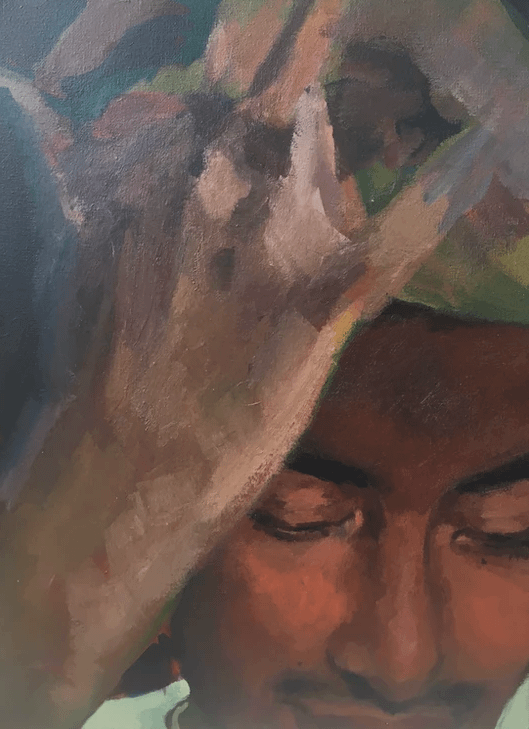 |
Recovery Beyond BingoCelebrate Recovery Month with us! Play through the month of September to win prizes and show your support for recovery. September is Recovery Month! In celebration, we put together a fun way to meet others in recovery, share your skills, and put your knowledge to the test in our Recovery Month Bingo. Everyone must register on the Community Calendar to receive their bingo card. Cards will be distributed on September 1st, and any day thereafter during September when you sign up. Follow this link to get signed up!! https://recoverybp.org/recovery-month-bingo/ |
 |
Seeking Safety Within the BIPOC CommunityOrganized by Arms Around You, from September 10, at 12:00 pm – September 24, at 4:00 pm (EDT) Have you suffered a traumatic event and/or do you struggle with substance use? Seeking Safety might be just what you are looking for. Please call when you arrive and someone will let you in the building (206) 430-8416 Venue: 1404 Yesler Way, #204, Seattle 98122 If you have any questions about this event, please call Nicquelle Jones: (206) 430-8416. |
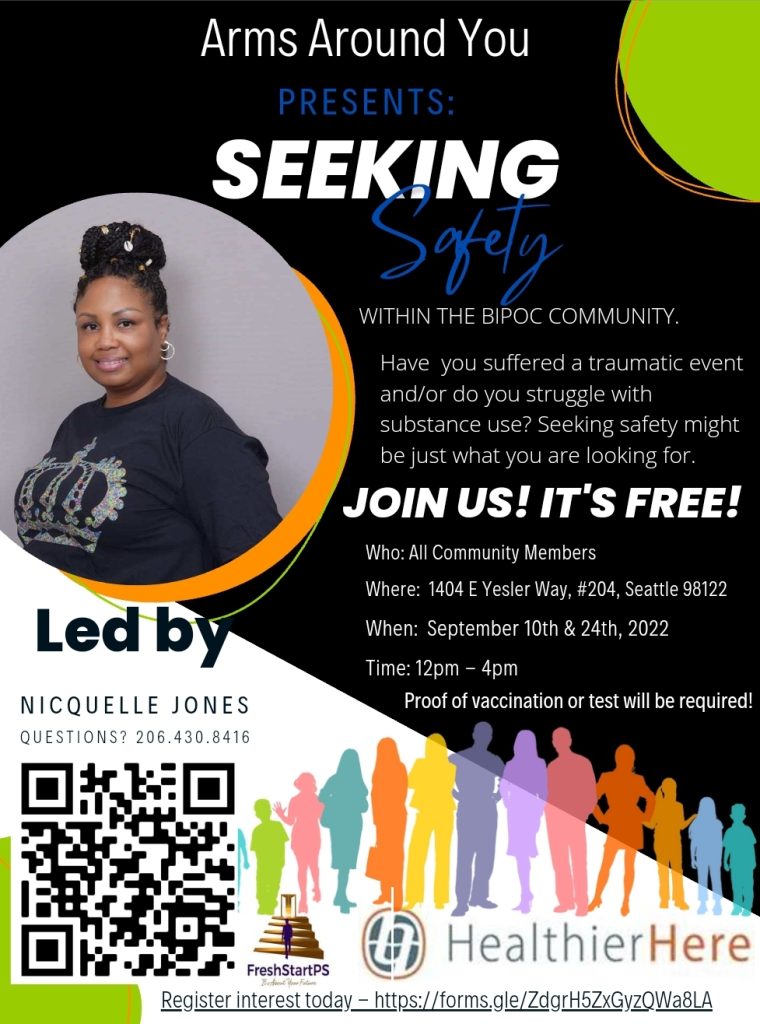 |
“For The Culture”Presented by CAARD &The Black Recovery MovementSeptember 15 @ 6:00 pm to October 27 @ 7:30 pm (CDT) |
 |
|
“For The Culture: CAARD & The Black Recovery Movement” is a virtual event series (via Zoom) featuring the collective cultural conscience and considerable talents that strengthen well-being, and life-affirming activities within our communities. The series will feature three segments: 1. Black Recovery 101 (September 15) 2. Supporting Our Community (September 29) 3. Progress – The Emerging Culture of Black Recovery (October 27) To register for the the event, please click on this link: Eventbrite.com: For The Culture Tickets |
|
Substance Use & Mental Health in 2022
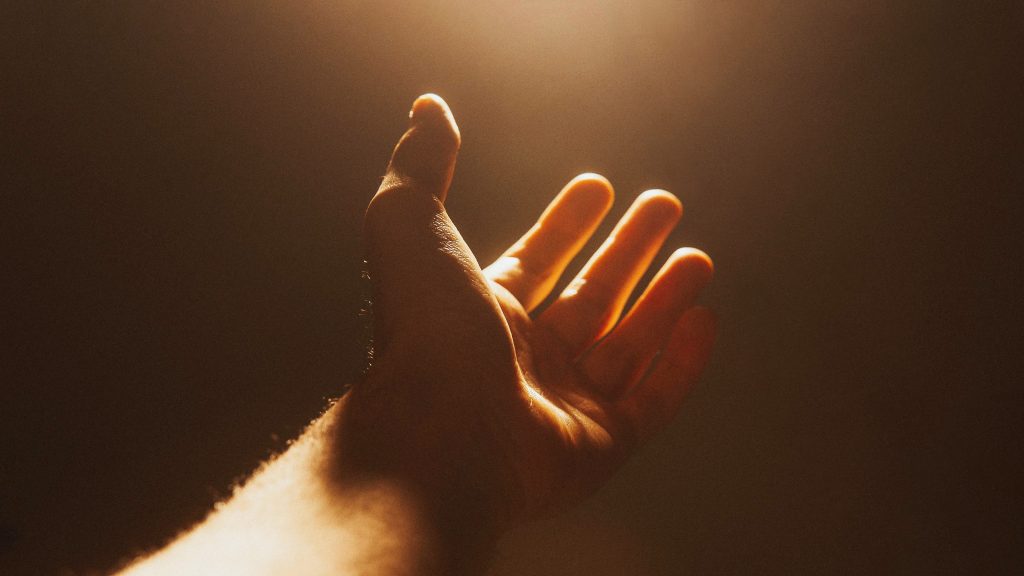
Recovery Month in 2022 is more important than ever when you consider the main health challenges facing today’s U.S. – the record numbers of fatal drug overdoses across the nation, driven by the synthetic opioid fentanyl or similar drugs, and the record numbers of people with mental health disorders and issues, resulting in the very real national youth mental health crisis affecting our children and teenagers.
What’s important to remember is a critical point that needs to be made over and over to raise its national awareness:
These dual challenges – substance use (with its record numbers of fatal drug overdoses), and declining mental health affecting adults and in particular, the nation’s youngsters – are, and always have been, intrinsically linked together.
Depressed and anxious young people will try to “self-medicate” their untreated mental health problems with drugs and alcohol.
If that’s something that is not considered general knowledge in the U.S., you can rest assured that the Mexican drug cartels south of the border certainly are aware, and they are now even more focused on targeting U.S. children and teenagers with highly addictive and potentially lethal illicit drugs.
Drug Use in 2022: The Deadliest Year Ever
Unknown quantities of the synthetic opioid fentanyl or another similar man-made chemical compound can now be found in virtually any illicit drug currently available in the U.S.: from heroin, cocaine and methamphetamine to counterfeit pills made to look like prescription tablets, such as OxyCodone, Xanax and Adderall.
In fact, in September, 2021 – exactly one year ago – the DEA launched the One Pill Can Kill Public Awareness Campaign to educate Americans of all ages about the dangers of fake pills.
And it only takes a tiny amount, too – around 2mg of fentanyl – to prove lethal to the user.
|
“People are more likely to experiment with something like a pill because there’s not that stigma attached to it. They’re turning to the web, they’re turning to social media, they’re looking for a substitute or a lower price than what they’re already paying for their legitimate prescription medication.” “These pills are oftentimes laced with a lethal dose of fentanyl, so a lethal dose is 2 milligrams or more, that’s considered potentially lethal for most people. You just don’t know what you’re going to get.” – Emily Murray, Omaha Division, Drug Enforcement Agency (DEA), Nebraska |
According to the CDC, 107,622 Americans died of drug overdoses in 2021, and two-thirds of those involved a synthetic opioid like fentanyl. Drug poisonings are now the leading killer of Americans between the ages of 18 and 45.
Mexican drug cartels (namely, the Sinaloa Cartel and the Jalisco New Generation Cartel – CJNG) are responsible for the vast majority of fentanyl being found today in the U.S.
The U.S. Youth Mental Health Crisis
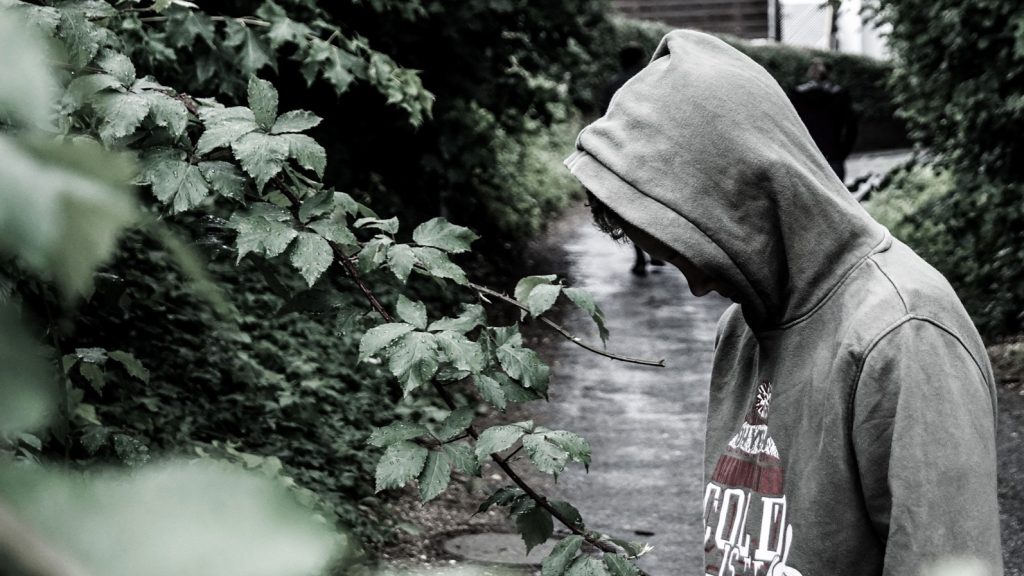
Mitchell J. Prinstein, Ph.D., is the chief science officer at the American Psychological Association, and at the beginning of this year, he wrote an opinion piece for The Hill media outlet.
In the article, entitled “U.S. Youth Are In A Mental Health Crisis – We Must Invest In Their Care,” Prinstein wrote: “Imagine a country where two kids in every classroom are experiencing debilitating illness, affecting their ability to concentrate and learn – and potentially threatening their lives. Americans likely would offer sympathy to such a country.”
“But there is no need to imagine: The U.S. is that place, and mental health problems are the pervasive illnesses that are deeply affecting children’s education, safety, and futures.”
U.S. Youth Mental Health: Key Points
Youth mental health in the U.S. has, in simple terms, been struggling for years, with no solution being offered or in many cases, even available, and mental health disorders were surging among adolescents years before anyone had even heard the phrase ‘COVID-19.’
- In 2019, 13% of adolescents reported having a major depressive episode – a massive 60% increase from 2007. Additionally, suicide rates among those aged 10 – 24 years, stable from 2000 to 2007, leaped nearly 60% by 2018, according to the CDC.
- According to the Centers for Disease Control & Prevention (CDC)’s report: “U.S. Adolescent Behaviors and Experiences Survey: January – June 2021”:
- 44% of adolescents reported feeling persistently sad or hopeless during the past year.
- 29% said a parent or other adult in their home lost a job, and 11% said they experienced physical abuse by a parent or other adult at home.
- 24% said they went hungry during the pandemic because there was not enough food at home.
- One study into the teenage drug overdoses by the University of California, Los Angeles (UCLA), found that even though drug use was not rising among adolescents, the rate of teenage drug overdose deaths for 2020 had nearly doubled from the previous year – predominantly driven by the synthetic opioid fentanyl being used indiscriminately in virtually all illicit drugs, including counterfeit prescription medications.
- Furthermore, according to an investigation by the New York Times in 2022, with inpatient psychiatric services in short supply, adolescents are currently spending days, even weeks, in hospital emergency departments awaiting the help they desperately need.
One last thing. Did you know that it takes on average 11 years for a child to receive the professional treatment they need after developing the symptoms of a mental health issue? Yes, sadly, it does.
Remember, too, that all this is happening at a time when the brain of a teenager is going through huge fundamental changes:
How Do Teenagers’ Brains Change?As we mature from children to adults, our brain undergoes massive changes. Here are some of the most important ones:
|
“Rainbow Fentanyl”: Deliberately Targeting Unhappy Kids & Teens
As we stated earlier, the Mexican drug cartels are now even more focused on targeting U.S. children and teenagers with highly addictive and potentially lethal illicit drugs. Their latest criminal “marketing ploy” is a drug nicknamed “Rainbow Fentanyl” by the U.S. news media.
“Rainbow Fentanyl” is brightly-colored fentanyl made in multiple forms, which include pills, powder, and blocks, which have been clearly manufactured to look like the lumps of chalk you see kids writing with on the sidewalks of your local neighborhood.
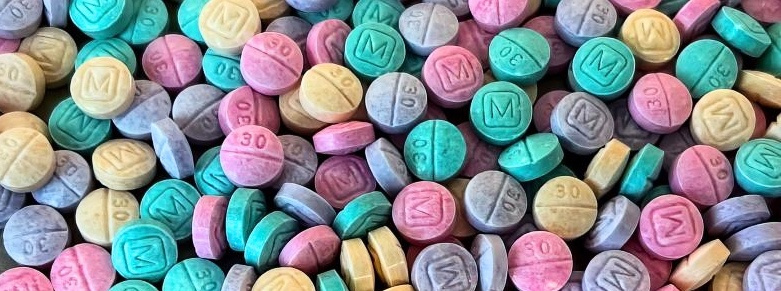
On September 1, 2022, and the very first day of Recovery Month, the DEA issued a new urgent press release warning of this emerging and extremely alarming trend – colorful fentanyl has now been found to be available in at least 18 states across the U.S.
This disturbing trend has one clear motive – to deliberately target and sell highly addictive and potentially deadly fentanyl made to look like candy to children, teenagers and young people.
|
“Rainbow fentanyl – fentanyl pills and powder that come in a variety of bright colors, shapes, and sizes – is a deliberate effort by drug traffickers to drive addiction amongst kids and young adults.” “The men and women of the DEA are relentlessly working to stop the trafficking of rainbow fentanyl and defeat the Mexican drug cartels that are responsible for the vast majority of the fentanyl that is being trafficked in the United States.” – Anne Milgram, Administrator, Drug Enforcement Agency (DEA) |
Modern Recovery: The Treatment of Substance Use & Mental Health
Modern Recovery is your source for comprehensive support for addiction and mental health recovery. Our mission is to provide consistent structure and accountability to empower participants in achieving success.
Modern Recovery is the only behavioral health accountability and support program that can offer technology-driven results to our clients, their families, and even treatment professionals.
Whether you are looking for an Online IOP option, Recovery Coaching, Adolescent Therapies, and Programs, or other Mental Health services, we have you covered.
How Modern Recovery Helps Families
Modern Recovery can give your loved one the support, accountability, and compassion they need to move them from short term growth to personal transformation. We assign a personal coach to each client working with us to connect daily, and also become a resource for you in this shared recovery journey.
We realize that behavioral health doesn’t only impact the person receiving the diagnosis, and we understand families and loved ones also need support, compassion, and peace of mind that their loved one is getting the help they need.
Contact us today to learn more.
